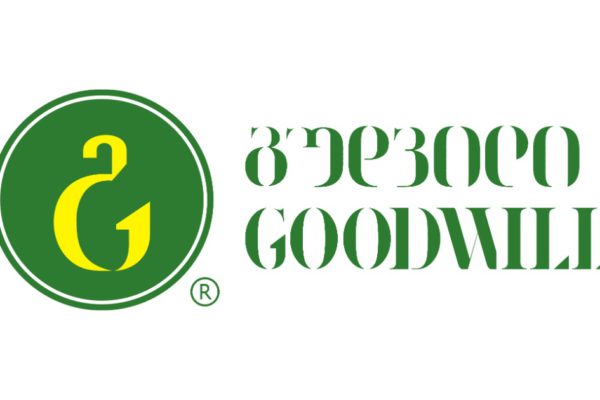
How to Target Multiple Generations in Georgia
Student: Nino Aslanishvili
Demographic segmentation is about understanding the makeup of your audience and drilling down to create a number of audience groups according to things like age, location, socioeconomic background, and family situation. The goal of a good segmentation study is to divide large, heterogeneous groups into smaller markets that may be more responsive to a targeted product or message.
Generations behave differently, are motivated by different things and consume media in different ways. All of these differences are driven by the events happening in the world as they grew up or the access they had to certain technologies. As advertisers or organizations try to gain the attention of these groups of people, we need to understand what drives these people to pick a brand and/or buy into an organization’s story. While the exact number of generations can vary, there are the four prominent generations getting attention today: Baby Boomers, Generation X, Millennials and Generation Z.
According to GeoStat statistics from 2020, Baby Boomers make up approximately 19% of Georgia’s population, Generation X – 21%, Millenials – 23% and Generation Z – 27%.
In the first place, Baby Boomers, born between 1946 and 1964, are between their early 50s and early 70s. Boomers can be reached through traditional means of advertising like newspapers, billboards, and television. Even with the learning curve of technology, they still use the internet as a source of news, so reaching them on news outlets is a key channel. First rule of Baby Boomers – they are not “old.” So, don’t imply that they are.
Known as the middle child of the living generations, Generation X-ers were born between 1965 and 1980, and are in their late 30s to mid-50s. They are more willing the change jobs, relationships, and even social and political views. They transitioned into the work force as the computer became a common office tool, so they know technology well enough to be reached through it – especially through social media. They do check their mail and email frequently, so do take advantage of the attention that email and snail mail get on a daily basis. It can be a real advantage. They are also the material generation, so this group of people likes brands – and they like value. Focus your message around value. If you are reliable and fulfill your promises, they are more likely to purchase.
Born between 1981 and 1998, Millennials (Generation Y) are between the ages of 19 and 36 – the generation raised on computers, who saw the new millennium. More focused on lifestyle than wealth, they are the generation who wants recognition and quick information. Millennials can be found online, with a strong digital reach not just on desktop computers but on mobile devices too. They can be reached in many ways, from social media to branded content, but even with their love for digital, this generation does not often check email or even look at snail mail. They get their news, info, and entertainment from phones and computers. They can still be reached through TV, but not in the traditional sense. Streaming and online video is the way to go if you want to use video ads to reach them. This is the generation who lives for lifestyle, and they are the reason for the birth of the lifestyle brand. Showing imagery of socializing and work balance is key, and limiting copy is essential. Relating to social issues will catch their attention, and recognizing their academic work and commitment will help build rapport.
The generation of tomorrow, born after 1999, the oldest Gen Z-ers are just reaching 18 and 19. This younger generation never knew a world without computers and cell phones, and at an earlier age they put down their toys and picked up a tablet, a smartphone, or a computer mouse. Focused on discovery, independence, and social change, this generation is taking advantage of the technology they have at hand, even if it cannot keep their focus for too long. Mobile online is the best way and almost the only way. Living their lives through their phones, they are very independent. They know what they want so getting to them directly is key, and their personal devices are the bridges. It is essential to make sure you are in various places, because considering the speed that the message has to be delivered, it must be reinforced multiple times. Keep it visual, video, short and sweet. Holding attention should not be the intent – simply grabbing it is good enough. They are overwhelmed with marketing and branding on the daily, so bringing value is key. Think content marketing times 10. This generation loves brand and loves eye-catching visuals. If you are going to use copy, don’t use a lot, make sure your visuals send the message, and do so clearly.
There is quite a large gap from the Baby Boomers to Generation Z, but as you transition across each generation between, the gaps become much smaller. So, whoever your audience is, make sure you understand where the gaps fall.
Generational marketing is one strategy that provides marketers an opportunity to penetrate deep into the targeted audience and better understand the needs and preferences of their market. You cannot expect, for example, baby boomers (currently at the retirement age) to act in the same way as millennials. Their content, media, technology and even social media preferences are all different. The one-size-fits-all marketing campaigns are not productive anymore, as each group expects a more personalized and tailored content that aligns with their interests and preferences.
To conclude, generational marketing psychographics are very important in today’s world. We live in a world that is constantly innovating, growing and changing. People are slammed with countless ads and choices throughout the day. Knowing your brand or product is the most important thing when it comes to marketing to any generation. However, it is vital to be familiar with each generation and how they are changing not only the workforce, but the world. When you build this understanding, you can better market your brand to each generation through their preferred method of gathering information.





